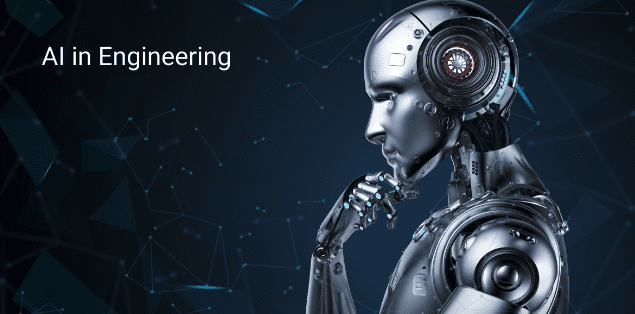In recent years, artificial intelligence (AI) has moved beyond theoretical discussions and into real-world applications—especially in engineering. From improving design accuracy to enhancing predictive maintenance, AI is transforming how engineers innovate, build, and maintain systems across industries.
This article explores how AI is revolutionizing engineering processes, the technologies enabling this shift, and the industries already reaping the benefits.
The Rise of AI in Engineering: A Technological Shift
The integration of AI into engineering isn’t a futuristic vision—it’s happening now. Powered by machine learning (ML), deep learning, and natural language processing (NLP), AI is automating tasks, improving decision-making, and solving complex engineering challenges faster and more accurately than ever before.
AI systems can analyze massive datasets in seconds—something that would take human engineers days or weeks—leading to faster development cycles and more informed design choices. Whether it’s mechanical, civil, electrical, or aerospace engineering, AI is leaving its mark.
Enhancing Design and Simulation with AI
One of the most profound impacts of AI in engineering is in the design and simulation phase. Traditionally, engineers relied on CAD (Computer-Aided Design) tools and physical prototypes. Now, AI-driven generative design tools are changing the game.
These systems allow engineers to input constraints and desired outcomes, and the AI generates multiple design alternatives based on millions of simulations. This leads to:
- Faster prototyping with fewer iterations
- Optimized structural designs for weight, strength, and material usage
- Innovative design possibilities that may not be intuitive to humans
For example, in aerospace engineering, AI-generated parts have reduced weight while maintaining structural integrity—an advancement that contributes to fuel efficiency and lower costs.
AI in Predictive Maintenance: Reducing Downtime and Costs
Predictive maintenance is one of the most valuable applications of AI in engineering. Instead of relying on routine checks or waiting for failures, AI systems monitor equipment in real time to predict when a component will fail.
Through the use of IoT sensors, real-time data, and machine learning algorithms, predictive maintenance enables:
- Early detection of wear and tear
- Minimized unplanned downtime
- Reduced maintenance costs
- Extended equipment life
Industries like manufacturing, oil and gas, and transportation are already saving millions by adopting AI-powered predictive maintenance.
Improving Quality Control and Manufacturing Processes
In modern manufacturing environments, AI-powered computer vision systems are revolutionizing quality control. These systems can inspect thousands of items per hour—identifying defects with precision no human inspector could match.
Key benefits include:
- Enhanced production line efficiency
- Consistent product quality
- Real-time anomaly detection
AI can also optimize supply chain operations, predict inventory needs, and streamline logistics—creating a more agile and cost-effective manufacturing ecosystem.
Smart Infrastructure and Civil Engineering Innovations
Civil engineers are using AI to develop smart infrastructure solutions that are more resilient, efficient, and sustainable. AI can analyze data from urban environments—like traffic patterns, weather, and structural integrity—to:
- Improve urban planning
- Enhance traffic flow with smart signals
- Predict and mitigate infrastructure failures
- Optimize energy and resource use
AI algorithms also help monitor the health of bridges, dams, and buildings by analyzing sensor data to detect cracks, shifts, or other signs of structural degradation—before they become critical.
Accelerating Product Development and Testing
AI allows for faster R&D cycles by simulating test environments digitally. For instance, in automotive engineering, AI can simulate crash tests thousands of times with various parameters to find the optimal design for safety and cost.
By reducing the number of physical prototypes, AI saves time, materials, and labor. Moreover, it can help identify potential risks during the early design phase—significantly improving the safety and performance of the final product.
AI and Robotics: A Powerful Engineering Alliance
Robotics and AI are a perfect match. Engineers are embedding AI algorithms into robots, making them more autonomous, adaptable, and intelligent.
Applications include:
- Autonomous vehicles
- Industrial robots with adaptive capabilities
- Construction robots for complex, hazardous tasks
- Maintenance drones for high-risk environments
AI-driven robots are increasingly being used in hazardous environments like mines, deep-sea exploration, and nuclear facilities—reducing human risk and improving efficiency.
Challenges of Integrating AI in Engineering
Despite its immense potential, AI in engineering does come with challenges:
- Data quality and availability: AI requires large, high-quality datasets to function effectively.
- Ethical and safety concerns: Particularly in autonomous systems, ensuring AI behaves predictably and safely is critical.
- Integration with legacy systems: Many engineering operations still rely on outdated infrastructure.
- Skills gap: There’s a growing demand for engineers who understand both traditional engineering and AI technologies.
Addressing these challenges requires investment in training, modern infrastructure, and cross-disciplinary collaboration.
The Future of AI-Driven Engineering
The future of engineering is data-driven, automated, and intelligent. As AI continues to evolve, it will enable:
- Fully autonomous design cycles
- Digital twins for real-time system modeling
- Self-healing infrastructure
- Advanced material discovery using AI simulations
- Hyper-personalized product development
In the long run, AI won’t replace engineers—but it will empower them. It will take over repetitive, data-intensive tasks, freeing up human engineers to focus on creativity, strategy, and high-level problem-solving.
Conclusion: Embracing the AI Engineering Revolution
Artificial intelligence is not just a tool—it’s a catalyst for engineering innovation. By embracing AI, industries can accelerate innovation, boost efficiency, reduce costs, and build smarter systems that were previously unimaginable.
As AI becomes more accessible, its integration into engineering will become a necessity rather than a luxury. Those who adapt early will lead the charge in building the intelligent, sustainable infrastructure of tomorrow.
Are you ready to engineer the future with AI?
Would you like this article formatted for a specific platform like LinkedIn or Medium?
Also Read :
